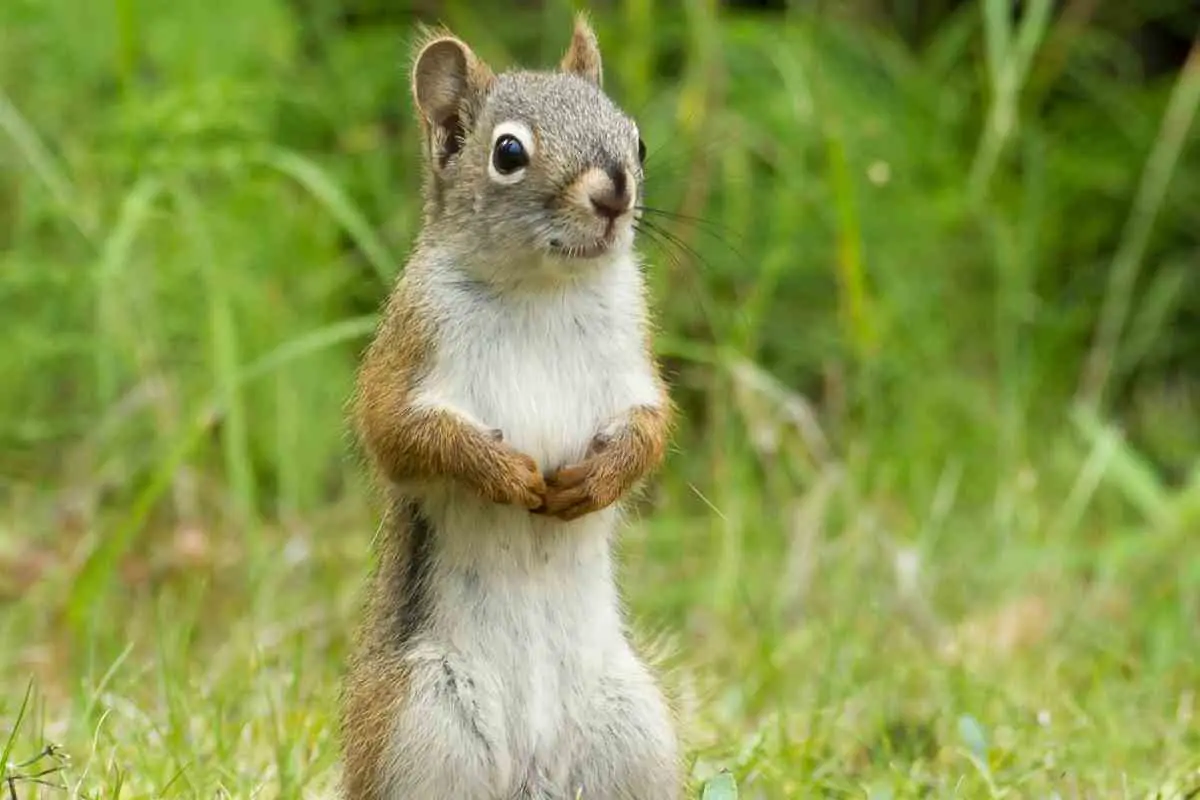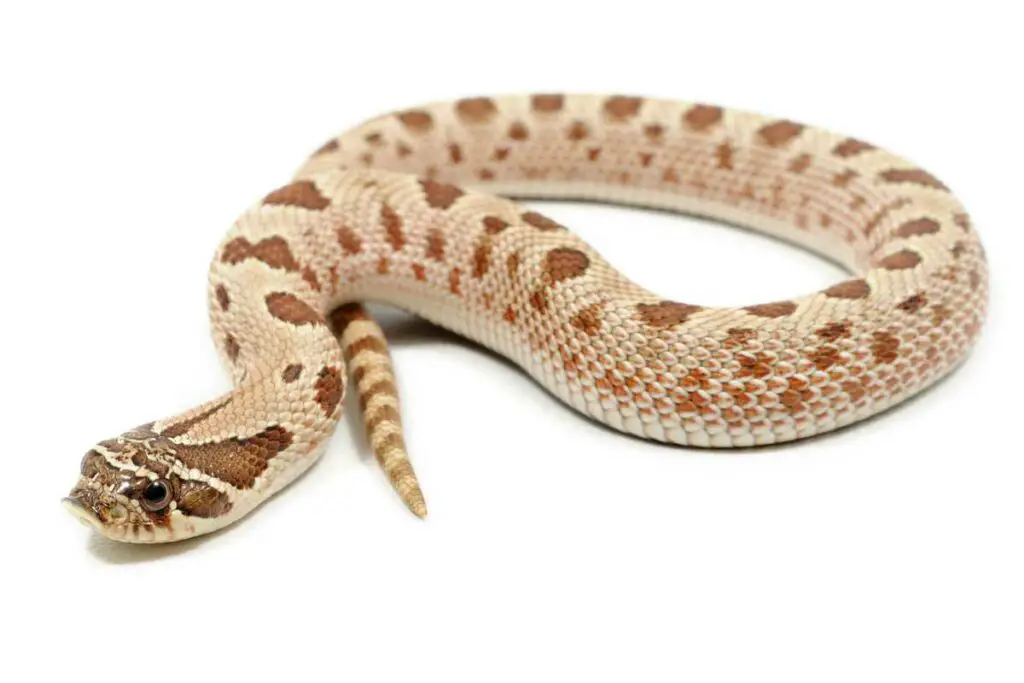Squirrels are a familiar sight in the United States, often seen leaping from trees to the ground, searching for food.
However, tree squirrels are not the only kind of squirrel species. Even though they are the most common.
There are also ground squirrels living in burrows. Another fascinating squirrel species are flying squirrels.
While not actual flyers, these types of squirrels can extend their limbs to glide through the air, sometimes leaping over 150 feet in one glide.
There are various types of squirrels found in the United States. Read on as we discuss ten fascinating kinds of these furry US residents.
Table of Contents
1. American Red Squirrel
The American Red Squirrel is a tree squirrel with a life span of a little over three years, on the condition that they survive the first year, where their mortality rate skyrockets.
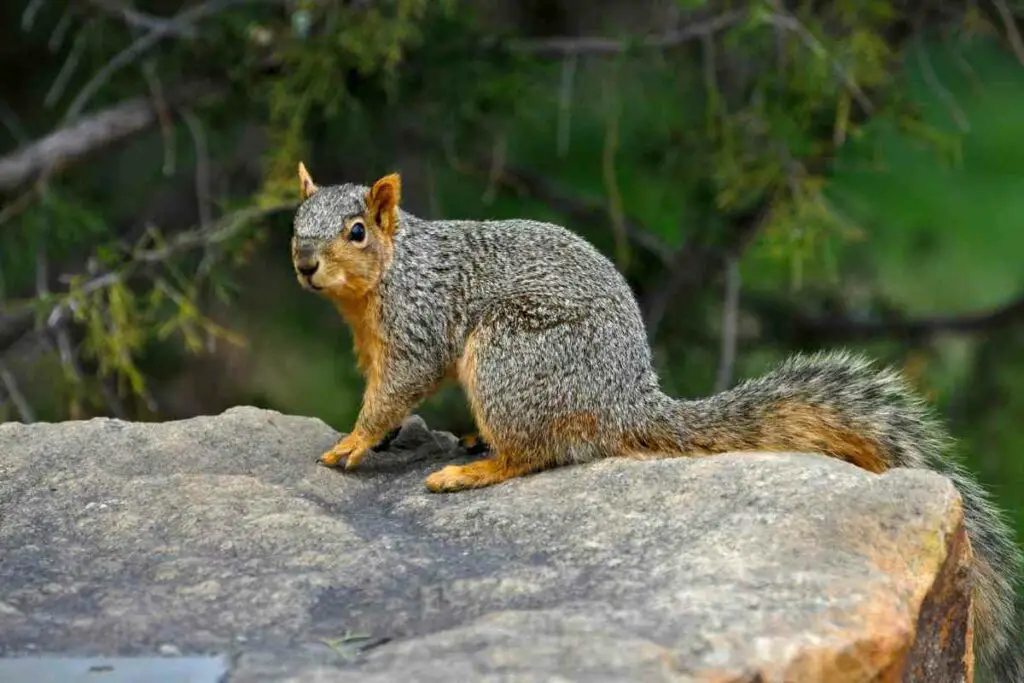
Where To Find American Red Squirrel: Southern Alaska, the US Rocky Mountains, North of Eastern US; Arizona has some isolated populations.
Almost 80% of baby squirrels don’t make it past the first twelve months of their life, owing to their long list of dangerous predators, including:
When seeking a glimpse of this squirrel kind, look for their reddish-brown fur and a contrasting white belly.
They are also considerably smaller in size than other tree squirrels in North America.
They are only about 11 – 14 inches, tails included. However, they do win in size against chipmunks.
Although technically granivores, the American red squirrels, apart from enjoying evergreen tree seeds, can often be found in urban areas, where they quickly adapt to available food sources.
Favorite Food: This small red squirrel feasts on bird eggs and sunflower seeds in backyards and parks. Moreover, they like to eat mushrooms (even those poisonous to humans) and mice.
2. Eastern Gray Squirrel
The Eastern gray squirrel can be anywhere from 16 to 22 inches long, including the tail, and weighs between 400 to 600 grams.

Where To Find Eastern Gray Squirrel: Midwestern and Eastern United States (Florida and South to East Texas)
This squirrel species has a bushy tail and gray fur. However, sometimes, you can find brown color variations in the coat.
Moreover, the eastern gray squirrel has an entirely black form, limited to specific geographical locations.
The Eastern gray squirrel enjoys various nuts and can be a nuisance in backyards, where they constantly mob bird feeders for seeds.
These rodents store seeds and nuts for winter.
However, they do not get to all the seeds stored once the winter months arrive, playing a vital role in seed dispersal. These forgotten seeds often grow into giant trees.
They usually fall prey to humans, raccoons, foxes, bobcats, snakes, dogs, domestic and feral cats. However, they are a species of Least Concern (LC).
3. Western Gray Squirrel
Western gray squirrels thrive in giant trees in the forests away from humans.
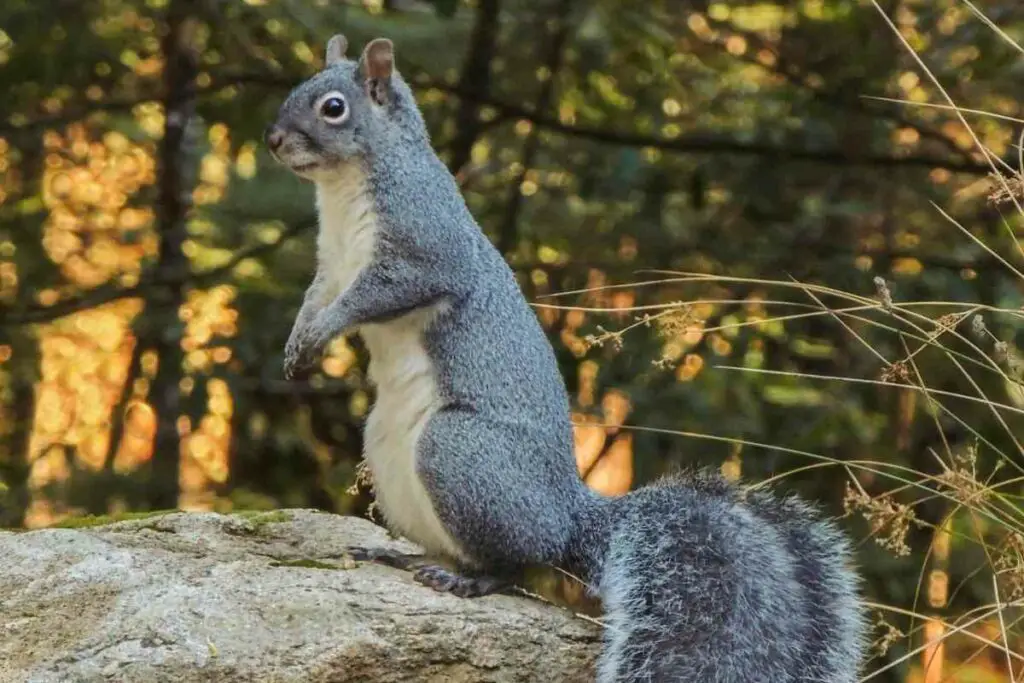
Where To Find Western Gray Squirrel: Western US coast; Washington, central and western Oregon towards the south, Central California and the Sierra Nevada
This arboreal rodent can be found in trees at the highest of 2500 m. It is one of the largest tree squirrels, about 17 – 24 inches long, including the tail.
Sometimes referred to as silver-gray squirrels, they like to eat nuts, acorns, and seeds thanks to their counter-shaded fur. They also feed on have fungus, berries, and insects.
Despite a similar appearance, the western gray squirrel is quite different from the easter gray squirrel as far as behavior is concerned.
Unlike their eastern counterpart, the western gray squirrel resides away from humans and is a shy species.
Since they do not adapt to urban infrastructure as other squirrel types, their population has come under threat due to the loss of their natural habitat and competition from other squirrel species introduced in their range.
Their numbers are also reduced by Notoedric mange infestation.
4. Abert’s Squirrel
18 – 23 inches long on average, the Abert’s squirrels’ unique ear shape with tufts of hair makes it easy to spot and distinguish from various squirrel types.

Where To Find Abert’s Squirrel: Southern Rocky Mountains in the US, concentrations in southwestern Colorado, New Mexico, and Arizona
It’s also called tassel-eared squirrel because of the ear hair tufts. The Abert’s squirrel has a noticeable rust-colored patch on its gray-furred back, with a white underbelly.
The Ponderosa pine tree is of great importance to this forest-dwelling rodent, as it uses it for:
- food
- nesting material
- and habitat
However, warmer months come, and these squirrels feed on buds and seeds.
For winter, they stick to runners of the Ponderosa bark and twigs.
Thanks to their interlocking canopy, the trees also provide them protection from the Northern goshawk by serving as a cover.
5. Fox Squirrel
The fox squirrel is the largest of all the tree squirrels native to North America.
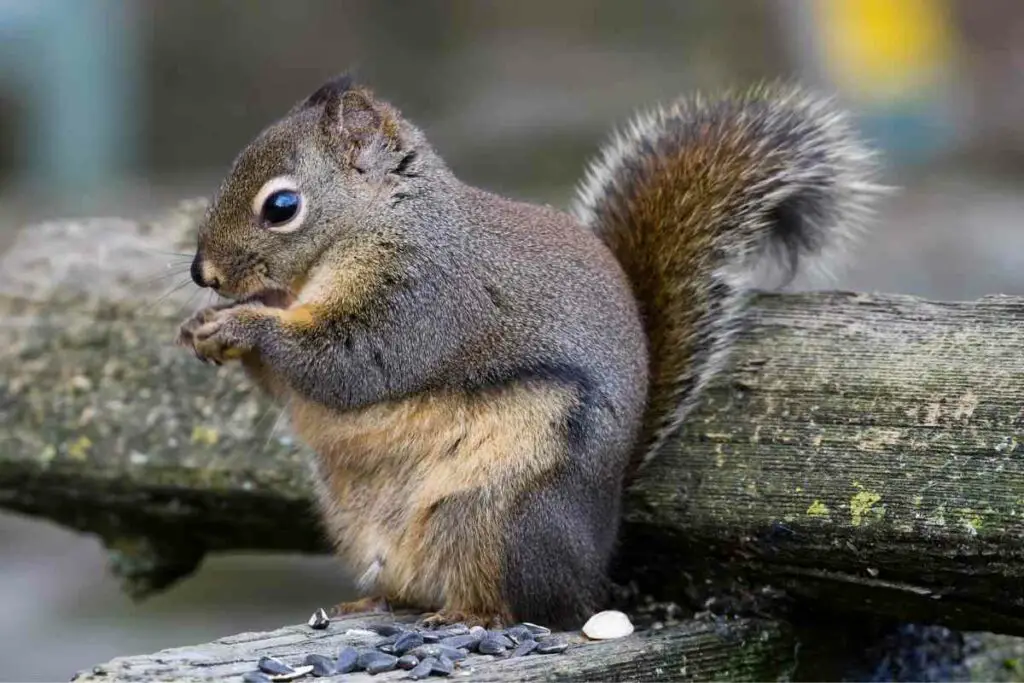
Where To Find Fox Squirrel: Naturally present in most of eastern US and west of Dakotas, Texas and Colorado; introduced in California, Idaho, Washington, New Mexico, Montana, and Oregon
While you may find them on the ground foraging for food rather frequently, they are excellent climbers – a skill that they use not only to scale trees but feeders too.
These squirrels thrive in varying habitats- feasting on walnuts, hickory nuts, acorns, and pecans when dwelling in deciduous forests.
The fox squirrel prepares for winter by hiding stores of such nuts in various locations. Interestingly, they are just as home in urban areas, where you can find these furry visitors in parks and suburbs.
Most common species have gray-brown furred backs, but their color varies from location to location.
Less-known Fact: One problem with the fox squirrel is that its excessive introduction into non-native areas has threatened the native squirrel population due to competition.
6. Douglas Squirrel
The Douglas squirrel is also known as pine squirrel or chickaree. (These names are also common for the American Red squirrel due to their similarities.)

Where To Find Douglas Squirrel: Northwestern coastal states In America
Their coat of fur changes colors during different seasons, where in summer they are more greyish-brown, but in colder months, the brown is much more evident, with ears prominently more tufted.
These noisy rodents have a distinguished alarm call, with which they warn of predators. King River’s Native Americans have named these squirrels by their call sound.
Even though they love seeds from coniferous trees, food availability dictates their diet, consisting of:
- bird eggs
- acorns
- berries
- and mushrooms
When storing food for winter, they go overboard, hoarding as much seed as possible by peeling numerous pinecone scales.
Therefore, pine scale piles on the ground are an excellent induction of the Douglas squirrel’s location.
7. Arizona Gray Squirrel
Despite its name, the Arizona Grey Squirrel is much more like the fox squirrel than the gray squirrels mentioned in this list.
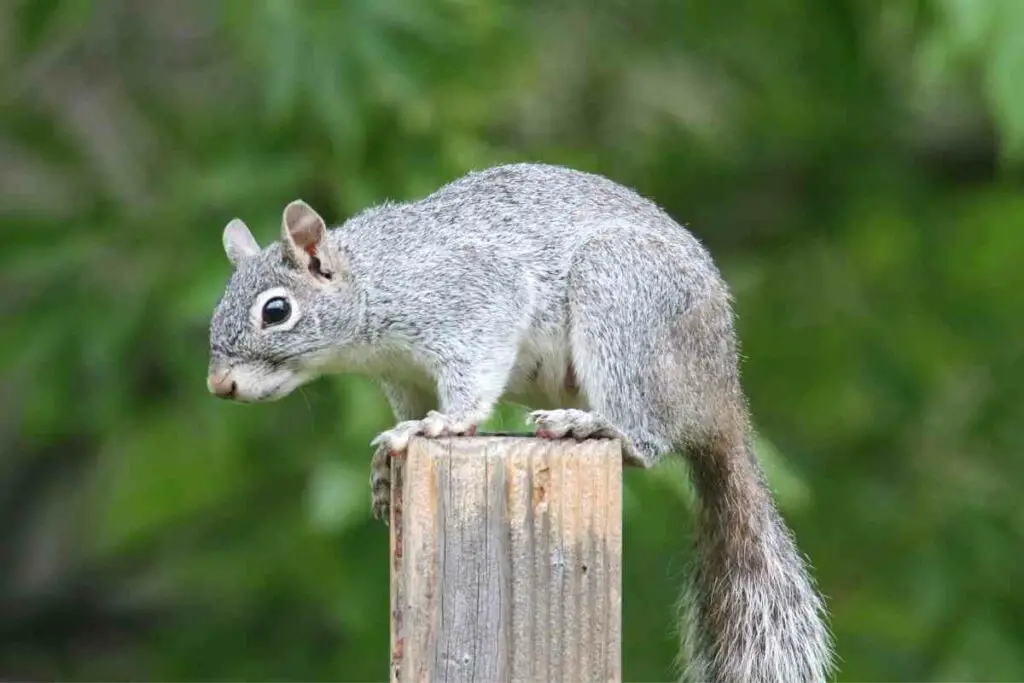
Where To Find Arizona Gray Squirrel: Limited range residing in New Mexico and Arizona
Their natural habitats are by the river near the mountains, where they can be found at mid-elevation.
Lovers of pinecones, acorns, and nuts are usually found near deciduous trees. However, spotting this shy squirrel is quite rare.
The Arizona gray squirrel mates when flowers bloom since they provide them with a high-energy food source that is essential for breeding and the survival of the offspring.
This squirrel type engages in mating chases, where you can see many male squirrels chasing after one female.
Protection of their nesting habitat is also crucial to their survival since the closed canopies of tall trees provide them with resources and protect them from various predators.
8. California Ground Squirrel
Expert burrowers, the California ground squirrels sometimes live in a community.
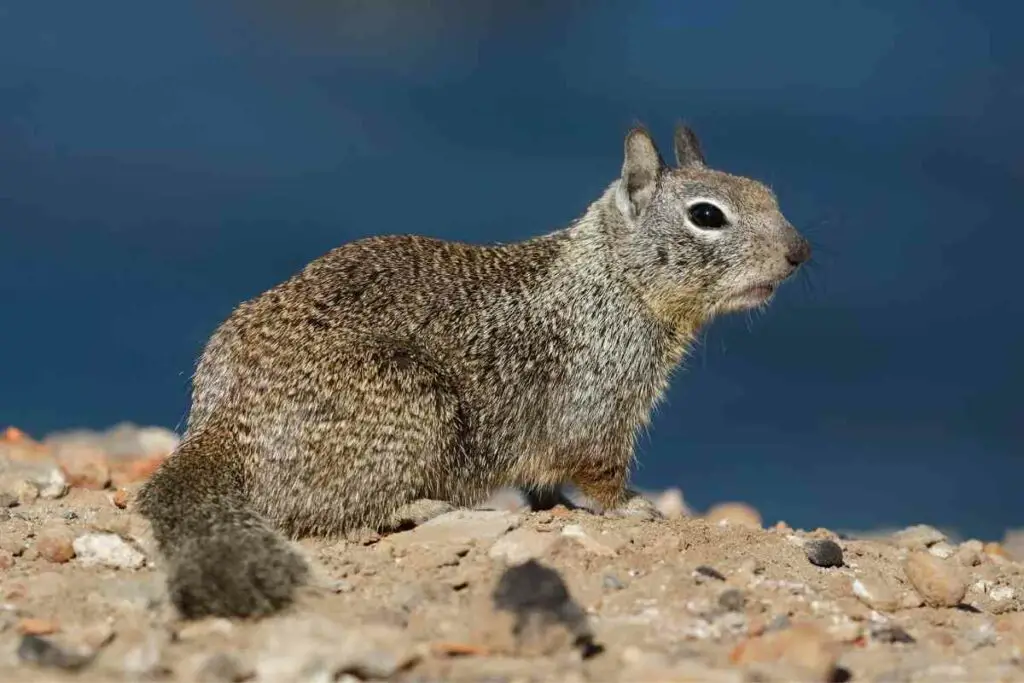
Where To Find California Ground Squirrel: Baja California Peninsula and the western US; usually found in California, Oregon, recent extensions into northwest Nevada and Washington
However, every rodent uses its entrance. These squirrels have blotches of light dusky and gray fur at the back.
Their chest is lighter in a color that is close to grayish-yellow. These ground species are 12 inches long, with the tail adding another 6 inches to their length approximately.
They are essentially herbivores preferring roots, fruit, nuts, and seeds and gain; they can also feed on insects.
However, their preference for a vegetarian diet has earned them the status of pests in gardens.
Even though several predators have eyes on them, rattlesnakes most frequently feed on these rodents.
9. Northern Flying Squirrel
Like all flying squirrels, the Northern flying squirrel is nocturnal with thick fur on its upper body, either cinnamon brown or light brown – the underside is whitish.
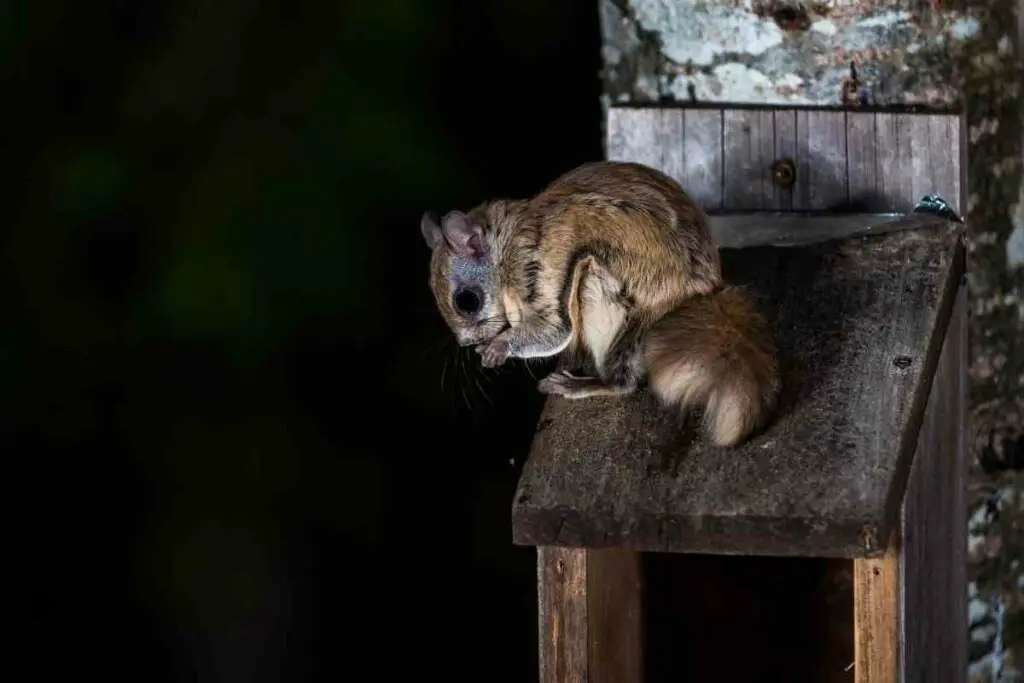
Where To Find Northern Flying Squirrel: Southern mountains of Tennessee and North Carolina, west of Utah, Alaska
Like most mammals active during the night, they also have whiskers.
However, since they move at night and live on tall coniferous and mixed coniferous trees, any flying squirrel sightings are pretty rare.
This rodent can glode at the angle of 30 to 40 degrees, but when faced with an obstacle, it can make swift 90 degree turns in the air.
Varying fungi species are their primary source of nutrition. However, they also eat nuts, lichens, buds, nestlings, flowers, and insects.
10. Southern Flying Squirrel
The southern flying squirrel has contracting fr on its upper and underside, with a gray-brown top and a white belly.
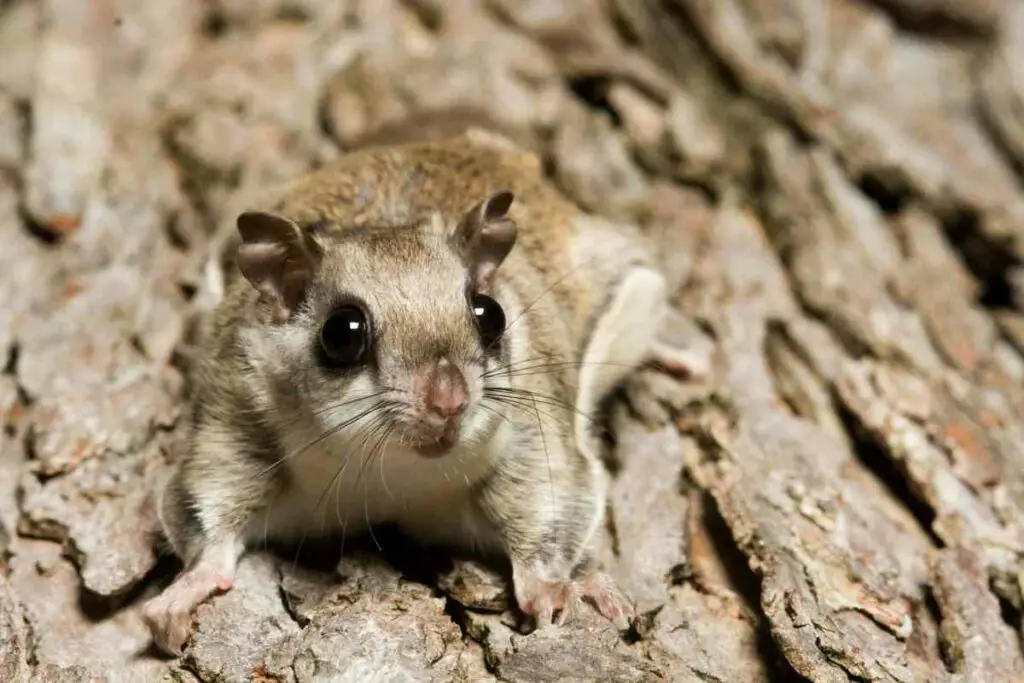
Where To Find Southern Flying Squirrel: The Eastern United States, touching parts of southeastern Canada all the way to Florida
These nocturnal rodents eat nuts and fruits from oak, beech, and hickory trees. However, they also feed on carrion, insects, and fungi.
They also make nighttime visits to bird feeders looking for peanuts and sunflower seeds.
These flying rodents are pretty social and have been observed looking for food or gliding in big groups. They are also known to gather in dens during colder months.
Good to Know: Humboldt’s flying squirrel is the last of three species in North America. They look a lot like their northern counterparts, only smaller and have darker fur.
Final Thoughts
Squirrels are fascinating with varying species found in North America.
The United States is home to these chirpy rodents that liven up parks and help in seed dispersal.
Found in varying habitats across the US, squirrel species are much more diverse than commonly anticipated.

